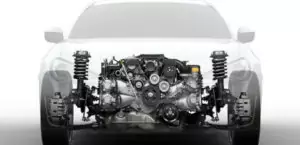The 2.0-liter Hyundai G4NH engine has been assembled at the Korean plant of the concern since 2016 and is better known for Kia Seltos, it is also installed in many markets on Elantra, Kona, Tucson and Soul. This unit belongs to the line of especially economical motors and operates on the Atkinson cycle.
The Nu family includes engines: G4NB, G4NA, G4NC, G4ND, G4NE, G4NH, G4NG, G4NL, G4NN.
The engine was installed on:
- Hyundai Elantra 6 (AD) in 2017 – 2020;
- Hyundai Kona 1 (OS) since 2017;
- Hyundai Tucson 3 (TL) in 2017 – 2021;
- Hyundai Veloster 2 (JS) since 2018;
- Kia Cerato 4 (BD) since 2018;
- Kia Seltos 1 (SP2) since 2019;
- Kia Soul 3 (SK3) since 2019.
Specifications
| Production years | since 2016 |
| Displacement, cc | 1999 |
| Fuel system | distributed injection |
| Power output, hp | 149 |
| Torque output, Nm | 180 |
| Cylinder block | aluminum R4 |
| Block head | aluminum 16v |
| Cylinder bore, mm | 81 |
| Piston stroke, mm | 97 |
| Compression ratio | 12.5 |
| Features | DOHC |
| Hydraulic lifters | yes |
| Timing drive | chain |
| Phase regulator | yes |
| Turbocharging | no |
| Recommended engine oil | 5W-30 |
| Engine oil capacity, liter | 4.0 |
| Fuel type | petrol |
| Euro standards | EURO 5/6 |
| Fuel consumption, L/100 km (for Kia Seltos 2020) — city — highway — combined |
8.8 5.6 6.8 |
| Engine lifespan, km | ~250 000 |
| Weight, kg | 115 |
Disadvantages of the Hyundai G4NH engine
- So far, most of the negative reviews are related to glitches in the electrical part.
- There are also complaints about the motor overheating due to the failure of the electric thermostat.
- The specialized forums describe cases of an engine wedge after a drop in the lubrication level.
- Since the engine has oil nozzles, there are no problems with scuffing.






